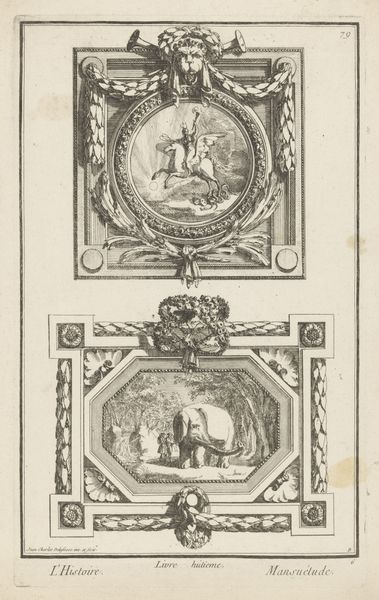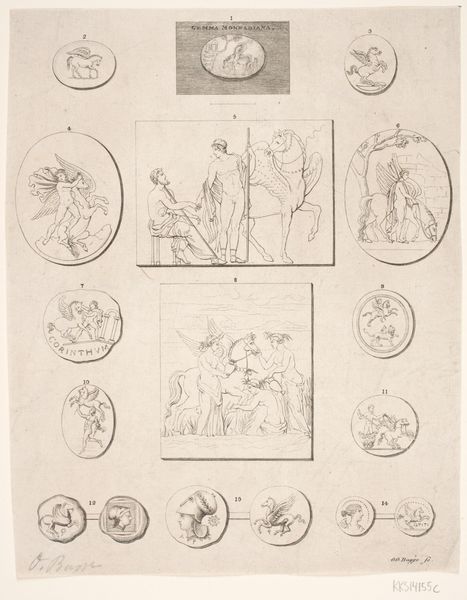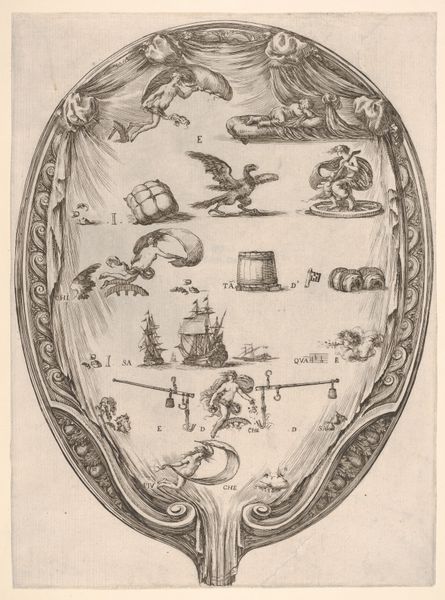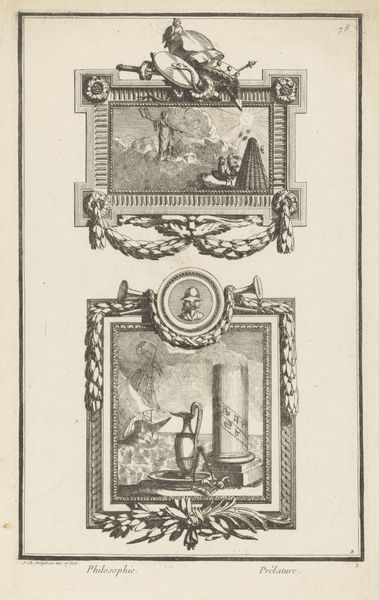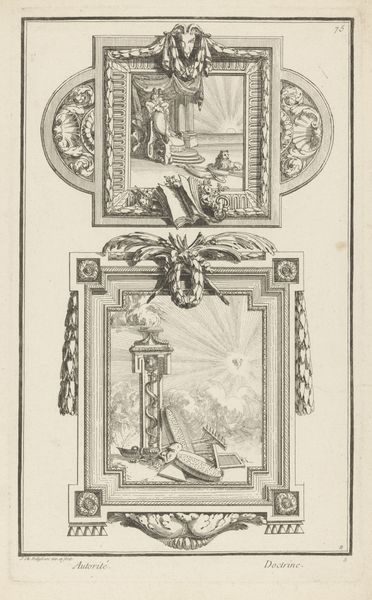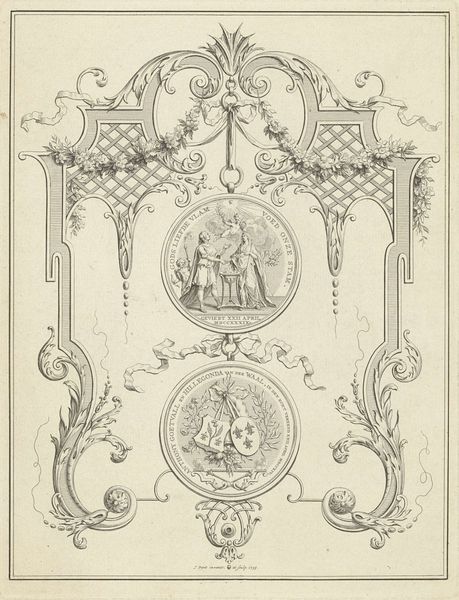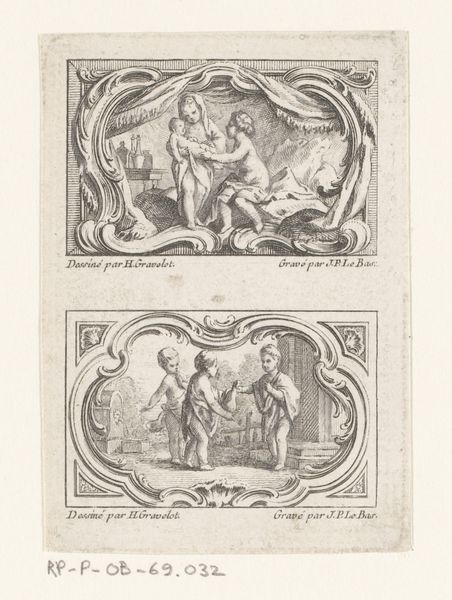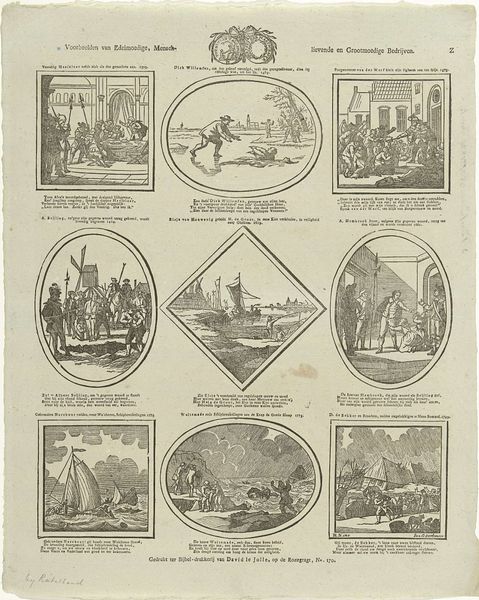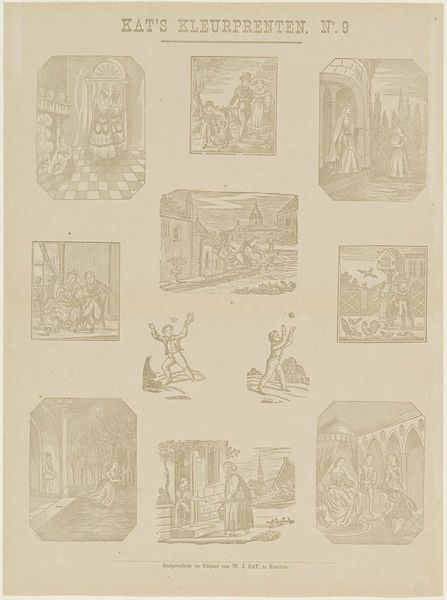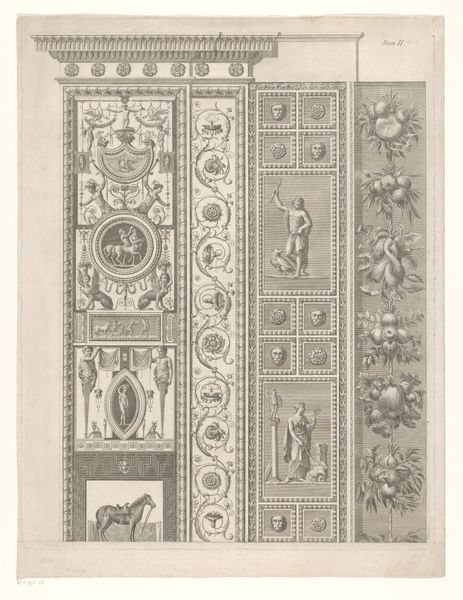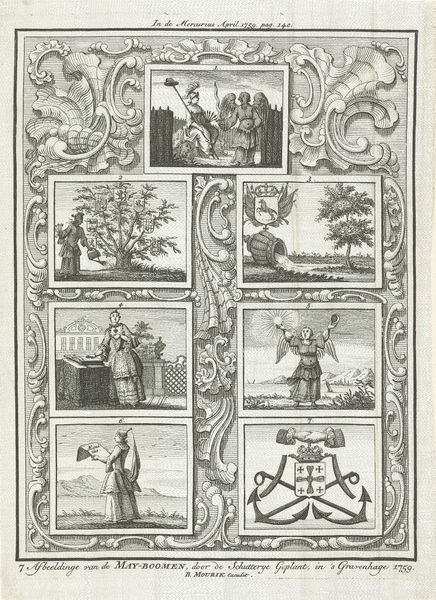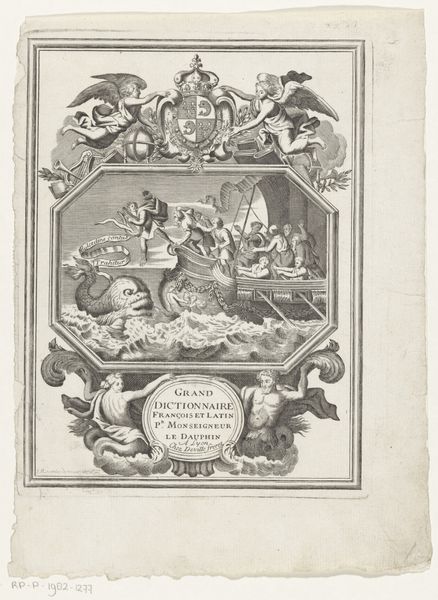
print, engraving
#
baroque
# print
#
figuration
#
history-painting
#
engraving
Dimensions: height 393 mm, width 254 mm
Copyright: Rijks Museum: Open Domain
This print, made by Jeremias Falck in the 17th century, presents six scenes from the lives of Atlas and Hercules. It was created through the process of etching, a printmaking technique using acid to cut into a metal plate. Look closely and you can see the fine lines created by this process. The very nature of printmaking is important here. Unlike a painting, which is a unique object, an etching can be reproduced many times. This makes the image accessible to a wider audience, a reflection of early capitalist modes of production, where items could be made in bulk to be bought and sold. Consider the amount of labor involved. The artist needed skill in drawing, knowledge of chemistry to control the etching process, and a press to make the prints. The social context of this work speaks to the rise of a merchant class with the means to consume art, and the technology that allowed artists to produce and sell their work more widely. Understanding materials, making, and context helps us move beyond traditional art history distinctions, recognizing the intricate connection between art, craft, society, and economics.
Comments
No comments
Be the first to comment and join the conversation on the ultimate creative platform.
